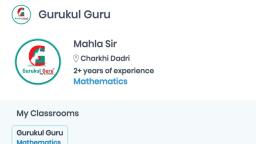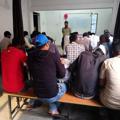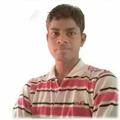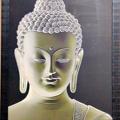Question 1 :
<img style='object-fit:contain' src='https://teachmint.storage.googleapis.com/question_assets/cbse_ncert/61b19b57273b230584979982.PNG' />
In the above figure, students of a school standing in rows and columns in their playground for a drill practice are shown. A, B, C and D are the positions of four students as shown in figure. Is it possible to place Jaspal in the drill in such a way that he is equidistant from each of the four students A, B, C and D? If so, what should be his position?
Question 2 :
ABCD is a rectangle formed by the points A $\left(–1, –1\right)$, B $\left(– 1, 4\right)$, C $\left(5, 4\right)$ and D $\left(5, – 1\right)$. P, Q,R and S are the mid-points of AB, BC, CD and DA respectively. Name the type of quadrilateral.
Question 3 :
If A $\left(x_1, y_1\right)$, B $\left(x_2, y_2\right)$ and C $\left(x_3,y_3\right)$ are the vertices of ∆ABC, find the coordinates of the centroid of the triangle.
Question 4 :
The distance of the point P (2, 3) from the x-axis is :
Question 5 :
Find the coordinates of the point which divides the line segment joining the points $\left(4, – 3\right)$ and $\left(8, 5\right)$ in the ratio 3 : 1 internally.
Question 6 :
Points A (–6, 10), B (–4, 6) and C (3, –8) are collinear such that AB = $\frac {2}{9}$AC. State true or false.
Question 7 :
Point P (0, –7) is the point of intersection of y-axis and perpendicular bisector of line segment joining the points A (–1, 0) and B (7, –6). State true or false.
Question 8 :
Name the type of the quadrilateral formed by the points $\left(1,7\right)$, $\left(4,2\right)$, $\left(-1,-1\right)$ , $\left(-4,4\right)$.
Question 9 :
If the distance between the points (4, p) and (1, 0) is 5, then the value of p is :
Question 10 :
Name the type of triangle PQR formed by the points P ($\sqrt 2$,$\sqrt 2$) , Q ($-\sqrt 2$,$-\sqrt 2$) and R ($-\sqrt 6$,$\sqrt 6$) .
Question 11 :
The distance of a point from the y-axis is called its x-coordinate, or abscissa. TRUE or FALSE ?
Question 12 :
The vertices of a ∆ABC are A $\left(4, 6\right)$, B$\left(1, 5\right)$ and C $\left(7, 2\right)$. A line is drawn to intersect sides AB and AC at D and E respectively, such that $\frac{AD}{AB}$=$\frac{AE}{AC}$=$\frac{1}{4}$. Calculate the area of triangle ABC.
Question 14 :
A (6, 1), B (8, 2) and C (9, 4) are three vertices of a parallelogram ABCD. If E is the midpoint of DC, find the area of ∆ ADE.







































